
PIONEERS
| Blackwell,
Samuel Biography: Samuel Blackwell (1805-1895) m. Catherine Shepherd (1835-1918), Claims: Settled in 1880. Kitty Blackwell was for a while the only white woman between Crystal City and Wakopa. Probable Significance: Source: Trails to Killarney p 216 / Reflections From the Local History Sources.. Samuel Blackwell was already seventy-five when he left Lucan, Ontario, for the west with his eighty year old brother George, his wife, Kitty Shepherd (1835-1908), thirty years younger than he was, and six children, Henry aged 19, Sarah, 16, James, 14, Robert 12, and two little ones, Mary, and Martha. The Blackwells had come from Ireland in 1843, the Shepherd ancestors in 1832, the latter coming with a group of Irish immigrants who walked the three hundred miles from Quebec to Goderich, Ontario, where Kitty was the first white child born in their district. They reached Emerson in March 1880, where Sam bought his oxen, a yoke and two chains, and a wagon, which cost him $20.00. Into the wagon they piled their worldly goods, which included an old harrow, a breaking plough, a stove, a spinning wheel, a Second Form Ontario Reader and the Bible Sam had brought from Ireland, which Kitty had saved when ruffians burnt their home in Lucan. Kitty carried the baby, George managed to walk. Robert remembers carrying an old gun. Sam had a big stick with which he pushed hard on the wagon box. In Emerson they met the Sutherland family who offered them the use of the cabin on their homestead near Cartwright until they could build their own. They chose NW 22-2-15 on Long River, and Henry walked to Deloraine to file for it. From ten pounds of potatoes they planted the eyes and harvested 300 pounds in the fall. Next year they planted rhubarb and asparagus, which still flourish there. They cut down trees along the river, squared the logs and built a cabin 14 by 16 feet, pressed clay and grass between the logs, spread saplings across the top and covered them with a layer of hay and a layer of clay, and moved into their own home in June. Kitty Blackwell was for a while the only white woman between Crystal City and Wakopa. In 1900 their son Robert took a homestead east of Holmfield, married Viola Fisher, and brought up four children. In 1927 he moved to Killarney where he lived till 1965 when he went in to Winnipeg to be near his daughters, Vera (Mrs. Clare Pybus) and Nora (Mrs. G. N. Vogel). He died February 2, 1967. Sam Blackwell and his family had good reason to leave Lucan. One night in 1875 a rap sounded on their door after midnight. The door was barred but, when a voice assured him the visitors were friends, Samuel Blackwell opened it and in stepped Andy Brown, who owed him $600.00 rent. Andy had eight men with him, their faces blackened with lamp black. In his hand was a rope which he put around Sam Blackwell's neck and then declared "I want a receipt for $600.00." Samuel Blackwell could not write a receipt, for he did not know how to write. The ruffians led him half a mile away to a tree where a halter was put on his neck. "Mark X on this receipt or we'll hang you by the neck to that apple tree," snarled Andy Brown. Blackwell signed. When Sam Blackwell took the case to court, Andy Brown swore that he had given the $600.00 to Mrs. Blackwell and that she had hidden it in the rafters, and he had the receipt to prove it. The Blackwells lost the case. Later men they believed to be Andy Brown and his gang burned their house and barn. "Father was no coward," asserted his son, "for he met the ruffians as they came away from the barn. Mother rushed back into the house and carried out the Bible that Father had carried in his pocket from Ireland." Little wonder that the Blackwell family decided to leave Lucan for a more peaceful area. Brown, James Benjamin Biography: (1854-1940) m. Sara Eliza Sayers (1863-1927) Claims: Came from Tweed, Ontario, in 1881 and worked for the CPR before taking up a homestead the next year. Served on the Lyonshall school board. In 1914 they retired to Killarney where they took an active part in the Methodist Church. Son, Walker Brown, owned the Solo Store. Probable Significance: Medium Source: Trails & Crossroads to Killarney p. 216 / Reflections p. 210 From the Local History Sources.. James brown came from Tweed, Ontario, in 1881 and worked for the C.P.R. before taking up a homestead the next year on SE 30-2-18. That fall he went back to Tweed to marry Sara Eliza Sayers. In the spring they came by train to Brandon and set out for their homestead with a team of horses drawing a sleigh on which were piled a wagon, groceries and all their belongings. They had not gone far when a spring thaw forced them to change from the sleigh to the wagon. James had built a one-room cabin and there his bride faced the problems of her new home. When passing Indians called at the cabin hoping to be given food, Sara ran up a flag as a signal for her husband to come to her rescue. They brought up a family of eleven children who attended Maple Grove and Lyonshall schools. James started the first Sunday School at Maple Grove, and later was superintendent of the Lyonshall Sunday School and on Lyonshall school board. In 1914 they retired to Killarney where they took an active part in the Methodist Church. Buck, Thomas Henry 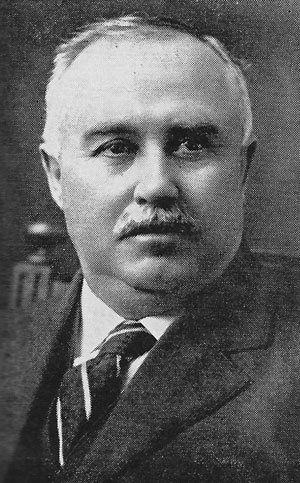 Biography: (1859-1929) m. (1891) Jane Myers Claims: Miller. Homesteaded 1881. Operated gristmill with the Young brothers. Formed the Young Grain Company – with 19 elevators in Southwestern Manitoba. Councillor, then Mayor during 1909 and again in 1911. In 1894 was the first Noble Grand of the Odd Fellows. He was a member of the Masonic Lodge. Probable Significance: High Source: Trails to Killarney p325 / Reflections p. From the Local History Sources.. Born at Hanover, Ontario on 19 January 1859, son of Abraham Buck and Mary McDowell, he left home at the age of nineteen and worked in the flour milling business for two years before arriving in Manitoba in June 1881. He took up a homestead in the vicinity of Boissevain. In 1892, he moved to Killarney and opened a milling partnership with Finlay M. Young. He married Jane Myers of Hanover, Ontario in 1891. They had a daughter, Beatrice Buck. He was a member of the AF & AM (Killarney Lodge No. 50). He served as Mayor of Killarney in 1909 and 1911, and was a Liberal candidate in the 1922 provincial election. He died at Killarney on 11 May 1929. Thomas Buck came from Hanover, Ontario, in 1881 to Boissevain where he took a homestead and farmed until 1890. After two years in a mill there, he came to Killarney where in partnership with the Young Brothers he operated a gristmill. The Municipalities of Riverside and Turtle Mountain issued debentures to bonus the mill, Turtle Mountain pledging $4,000. The mill was up-to-date in every way and could handle a hundred barrels of flour a day. Young and Buck built an elevator on a spur track, which made it possible for them to handle great quantities of grain. They founded the Young Grain Company, which operated nineteen elevators in Southwestern Manitoba until 1921 when it was sold to N. M. Paterson and Sons. In partnership with Thomas Buck they established a grist mill in Killarney which could handle 100 bags of flour a day. When a demand arose for motorcars, he became the agent for the Model T Ford. In 1891 he married Jane Myers of Hanover. Their only child, Beatrice, died tragically when the lamp she was carrying exploded. Thomas Buck served as councillor in Killarney and was mayor during 1909 and again in 1911. He was a member of the Masonic Lodge and in 1894 was the first Noble Grand of the Odd Fellows. Brown, James Benjamin Biography: (1854-1940) m. Sara Eliza Sayers (1863-1927) Claims: Came from Tweed, Ontario, in 1881 and worked for the CPR before taking up a homestead the next year. Served on the Lyonshall school board. In 1914 they retired to Killarney where they took an active part in the Methodist Church. Son, Walker Brown, owned the Solo Store. Probable Significance: Source: Trails to Killarney p 214, 65 / Reflections p. 210 From the Local History Sources.. From “Trails” JAMES BENJAMIN BROWN (1854-1940) came from Tweed, Ontario, in 1881 and worked for the C.P.R. before taking up a homestead the next year on SE 30-2-18. That fall he went back to Tweed to marry Sara Eliza Sayers (1863-1927). In the spring they came by train to Brandon and set out for their homestead with a team of horses drawing a sleigh on which were piled a wagon, groceries and all their belongings. They had not gone far when a spring thaw forced them to change from the sleigh to the wagon. James had built a one-room cabin and there his bride faced the problems of her new home. When passing Indians called at the cabin hoping to be given food, Sara ran up a flag as a signal for her husband to come to her rescue. They brought up a family of eleven children who attended Maple Grove and Lyonshall schools. James started the first Sunday School at Maple Grove, and later was superintendent of the Lyonshall Sunday School and on Lyonshall school board. In 1914 they retired to Killarney where they took an active part in the Methodist Church. Their surviving children are Lottie (Mrs. J. G. Tewsley) of Calgary, Florence (Mrs. T. A. Hill) of Ninga, Lena (Mrs. J. E. Hoath) of White Rock, British Columbia, Benjamin, John, Walker, Gertrude, Leta (Mrs. Roy Clark) of Killarney. Campbell, George Biography: George Campnell (1866-1946), m. Mary Jane Russell (1872-1946). Claims: Arrived in Killarney by train in the eighties with $1.20 in his pocket. Operated a threshing machine in partnership with John Hannah. Bought a farm in 1893. Helped establish the Killarney Southern Manitoba Fair. Sold shares in the Grain Growers' Elevator, and served as a director of the Killarney branch of Manitoba Pool Elevators. He was an elder in the Presbyterian Church and a trustee of Highview School for many years. Probable Significance: Source: Trails to Killarney p 332 / Reflections p. From the Local History Sources.. “Reflections” George arrived in Killarney by train in the eighties with, as he often told his family, $1.20 in his pocket. After working for John Clark of Bellafield, a year in a logging camp near Seattle, working again for John Clark and John Hannah, he operated a threshing machine in partnership with John Hannah which kept them busy into the winter. In 1893 he bought E 14-2-17 and married Mary Jane Russell (1872-1946). He was deeply interested in the work and progress of the community, working to establish the Killarney Southern Manitoba Fair, selling shares in the Grain Growers' Elevator, and serving as a director of the Killarney branch of Manitoba Pool Elevators. He was an elder in the Presbyterian Church and a trustee of High- view School for many years. In politics he was a Liberal. George and Mary Jane Campbell had four children: Emmaline (Mrs. Andrew Miller) of Killarney, Russell, Wilfred, a doctor in Medicine Hat, and Guy, who farmed the original half section until 1963. Chapman, James Biography: Claims: Came in 1882 with Brother William Probable Significance: Source: Trails to Killarney p / Reflections p. Crawford, George Biography: George Crawford died in 1934, and his wife, Elizabeth, in 1943. Claims: Homestead in 1881. Built the first bridge in the municipality at Wakopa in 1881. In the nineties he moved to Killarney where he built two livery and feed barns. About 1905, his horse, Pathmount, established an outstanding reputation on the racetracks of Manitoba. Probable Significance: Source: Trails to Killarney p224 / Reflections p. From the Local History Sources.. “Reflections” Mr. Crawford came out from Exeter, Ontario, in 1880 and, making the home of Richard Downie, his brother-in-law in Crystal City, his headquarters, explored the surrounding country on foot. Observing that there was a ready market for horses he returned the next spring with some for sale. The last team was exchanged near Morden for a yoke of oxen which he drove to Crystal City. Leaving them there he walked with James Moir and Peter Low to Deloraine to file his claim. All three found that the land they had chosen had already been claimed, so they returned to Crystal City, took the oxen, selected other sites and returned to file once more. On June 24, 1881, he filed for E 28-2-17, the first registration on record for this township. He cut and hauled logs from Turtle Mountain to build his cabin and stable. According to Alex Rankin in Stories of Pioneer Days at Killarney, he built the first bridge in the municipality at Wakopa that year. In the fall he went back to Crystal City where he helped Richard Downie harvest and then returned to Ontario. Meanwhile his brother William came out and lived in his cabin while cutting and hauling logs for his own buildings. George was greatly interested in horses and in the nineties he moved to Killarney where he built two livery and feed barns. The first was of stone and on Main Street. The second was a large handsome building on Williams Avenue. About 1905 his horse, Pathmount, established an outstanding reputation on the race tracks of Manitoba. While operating the livery stable George Crawford continued to manage his farm. Crawford, William Biography: Claims: Followed his brother George to Manitoba in 1881 Probable Significance: Source: Trails to Killarney p / Reflections p. From the Local History Sources.. “Reflections” William Crawford followed his brother George to Manitoba in 1881. His sister was one of the Greenway settlers at Crystal City. He filed on SW 12-2-15 and spent the winter getting out logs for a house. George, whose house was finished, went back to Ontario and returned in March 1882 with both families. They were snowbound for three days in Emerson while the men built sleighs to them along the Boundary Commission trail. Two nights were spent at Mennonite settlements en route to in Crystal City. They reached George's homestead April first and crossed Jack Fish Creek on the 11th. They harvested a good crop of flat potatoes they had sown on backsetting, furrows broken the year then turned back. They also had five acres of oats. the ploughshares could no longer be sharpened hammering on a stone, someone carried them in a sack Crystal City. David, Alex 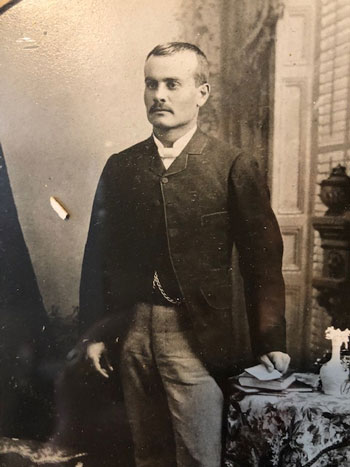 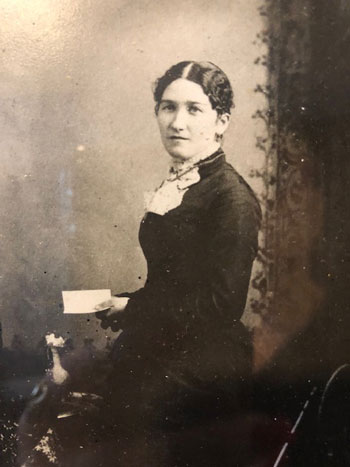 Biography: Alex David (1858-1912) married Harriet Hysop (1863-1935) on March 28, 1883 Claims: Came west in 1882. He was a stonemason, and carpenter. He did his own blacksmith work, and doctored his own animals, mixing his own medicines, liniments, and salves. His advice and help was often sought by his neighbours with a sick horse or cow. In 1889 he set up a cheese factory. Oak Ridge School trustee for many years. Probable Significance: Source: Trails to Killarney p229 / Reflections p. From the Local History Sources.. The David family has long been part of Killarney’s history. It began with the arrival of Alex David (pictured) below who arrived in 1882 with Will Hysop. He married Harriet Hysop (pictured) on March 28, 1883. From Trails and Crossroads to Killarney: “.. they (Alex and Harriet coming from Gananoque, Ontario) brought a carload of possessions which included a team of good mules, a bellows and anvil, farm equipment and furniture … He (Alex) was his own stonemason, building his own basement, his own carpenter, building the frame cottage.” My Grandpa, J.A.V. David, was said to have inherited his father’s love of community watching his father assist neighbours through his skills (above) and ability to care for his animals. “In 1887 he sold his homestead and bought three-quarters of section 7-3-17 on the bank of the Pembina River.” The last picture is the David homestead which was located on the land behind the present Oak Ridge cairn, about 5 miles north of town. “His outlook was progressive .. he made a deal with the company (railroad) to bring families out, thirty-six families to come to Southern Manitoba. Other people were bringing out horses but no one was supplying vehicles, so he bought from McLaughlin Brothers carloads of buckboards, buggies, sleighs, car and wagons which he sold to the homesteaders. He owned and operated the first upright steam engine in the district.” - 1889 set up a cheese factory bringing Isaac Woods from Ontario - had up to 50 cows, employed 3 married couples and single men - bought all the milk the neighbours brought - 1892 bought a Babcock Milk Tester to determine if milk had been diluted - 1899 sold his herd to the C.P.R. and 1/2 his equipment to Nathan Clark south of Killarney - 1889 built a red brick house and a 3 storey barn of stone, brick, and lumber - he was a Trustee of Oak Ridge School for many years Davidson, W Biography: m. 1898, Ann Rankin Claims: Arrived in 1892. Played the autoharp at dances etc. Probable Significance: Source: Trails to Killarney p p360 / Reflections p. From the Local History Sources.. “Reflections” James and William Davidson belonged to a family of ten living on a hundred acre farm near Fergus, Ontario. Realizing that prospects were not good for acquiring farms there, they decided to come west in 1892 to seek their fortunes. They chose Killarney because their friends, James and William Chapman, who had gone there in 1882, were prospering. They had some idea of making enough to venture farther west. The train was snowbound east of Killarney so they walked the last lap, arriving in March 1892, with only two or three dollars be- tween them. They found work on adjoining farms, James with J. M. Rankin, William with J. J. Rankin, at $210 a year. Both the Rankins had large families and the newcomers felt at home, in fact both married daughters of their employers, James marrying Margaret, William marrying Ann Rankin in1898 Long River school was opened the year they took the farm and at concerts there James and Alvin Oles played the violin, Mrs. Oles, the organ, and William, the autoharp. Fairhall, Frederick Biography: (1827 – 1909) Claims: Came to District after seeing a presentation by Thomas Greenway. Chose a location north of where Killarney would later be located on the advice of a Land Agent. It became the Fairhall District but the railway passed to the south. Probable Significance: Modest Source: Trails & Crossroads to Killarney p. / Reflections p. Finlayson Family Biography: Catherine Finlayson was the second white woman in the district. Colin Finlayson's marriage to Maria Shier was the first wedding and their daughter Anna the first white child born there. Catherine Finlayson was doctor and nurse combined for some years in the Victoria Lake district. Claims: Modest Probable Significance: Modest Source: Trails & Crossroads to Killarney p .237 / Reflections p. Foster, Stuart 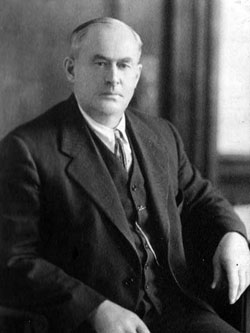 Biography: m. Rhoda Kilpatrick Claims: Homestead 1881. Was the first of them to come to the Lena area, Probable Significance: Source: Trails to Killarney p 241 / Reflections p. From the Local History Sources.. “Trails” STEWART FOSTER was the first of them to come to the Lena area, filing for NW 2-2-17 in 1881 which he fanned for over twenty years before leaving for Saskatoon. There was quite a stir in the community when he eloped with Rhoda Kilpatrick, who was engaged to marry a young man in Exeter, Ontario. John Kilpatrick tried to catch them, hitching his fastest steers to the buggy and arming himself with a pitchfork, but soon realized he could not overtake the runaway couple. The marriage turned out happily Fowler, Charles & Margaret Biography: (1834 – 1896) m. (1857) Margaret Martin (1838 – 1923) Claims: came to the Killarney area and filed for E 28-3-16. Hullett School was named after their old home in Ontario. In 1885 Agnes Fowler married a neighbour Peter Finnen, and the next year Ann married his brother, Alex. Probable Significance: Modest Source: Trails & Crossroads to Killarney p. 243 / Reflections p. Gaetes, George Whyte Biography: (1849-1933), m. (1882) Mary Ann Dodds (1850 – 1919) Claims: Early homestead. Today the north part of the town of Killarney is spreading over the area he once farmed. Probable Significance: Source: Trails & Crossroads to Killarney p. 247 / Reflections p. Highlights from Local Histories George Gaetes was a small boy when he came with his parents from the Isle of Wight to Hepworth, Ontario. He married Mary Ann Dodds in 1882 they and their five children came west, where George filed for N 2-3-17. Today the north part of the town of Killarney is spreading over the area he once farmed. Their first home was a one-room log cabin with an attic and a board floor which Mary Ann scrubbed with rushes from the slough; the furniture was home-made, the beds of lumber topped by straw ticks. For income Mary Ann knitted socks and mittens and sold her bread to bachelor neighbors. When times were hard, George worked on the railway while his wife looked after the farm work. The first of their six Killarney babies arrived in January, 1883, when George was away fishing, not for sport, but to provide food for the family. Two older children kept the fires alive during the night when the baby arrived without benefit of doctor or neighbour. In the morning Mary Ann dressed the eight-year-old in her warmest clothing, pinned a red shawl across her shoulder so she could watch her on her way and sent her a mile and a half across the frozen lake to the Hossacks for help. Haight, George 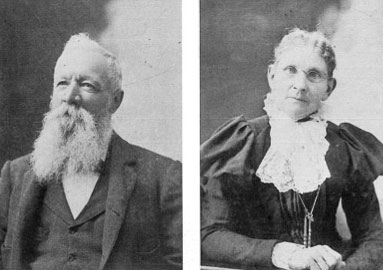 Biography: George and Nancy Haight Claims: Mr. Haight named the area Rowland, prompted by the rolling countryside. Built the first real house in the district in 1885 on N.W. 2-4-18. The Haights ran a stopping house, and also a horse exchange. They also had a feed business and a large livery barn. Credited wirhsettling most of the south half of Township 4-18. His four sons, William, Ozra, Joseph and Seymour, and many of their friends and neighbours from Oxford County joined them. Probable Significance: Source: Trails to Killarney p 251 / Reflections p. From the Local History Sources.. “Reflections” In 1882 George Haight (1833-1913), his wife Nancy and four sons, Ozra, Seymour, Joseph and William came from Oxford County in Ontario to settle Rowland district. Mr. Haight named the area Rowland, prompted by the rolling countryside. George and Nancy Haight built the first real house in the district in 1885 on N.W. 2-4-18. They homesteaded NW 2-4-18 and his son, Ozra, located on SW 10-4-18 where the hopeful settlement of Rowland developed. As it was expected that the railway would pass through section 10, a number of buildings were put up. The Haights ran a stopping house, and also a horse exchange where horses were brought from Eastern Canada by rail to Emerson and driven across the prairie by the men of the Haight family. They also had a feed business and a large livery barn. When the railway chose the southern route, the hopes of the people of Rowland were dashed. The Haight family suffered another disaster when their forty horses developed glanders and had to be shot and the bodies burned along with the buildings. The first post office was in George Haight's home and remained there until there was so much confusion in the mails between Rowland and Roland, some seventy miles east, that it was moved to the Hyder farm and renamed Hyder P.O. Credit is given to George Haight for settling most of the south half of Township 4-18. His four sons, William, Ozra, Joseph and Seymour, all took homesteads and many of their friends and neigh- bours from Oxford County joined them. There were few women in the district; most of the men were unmarried. Naturally they were eager to give any women who came a hearty welcome, but when Mrs. George Haight arrived on July 7, 1883, accompanied by Miss Cunliff, they made such good time coming across the prairie from Brandon that they arrived too soon for the grand reception S. J. Woodrow had planned - all the men and their ox teams accom- panied by a brass band were to have assembled to greet them. Hossack, James Biography: m. 1954 Jane Blackburn Claims: Came to Killarney from Wroxeter, Ontario, in 1881. He was the second person to take a homestead in that township and the first to take land on part of which the town of Killarney is now situated. Superintended the stone and brick work on the first Killarney High School, surveyed the area north of the bay into lots. Probable Significance: Source: Trails to Killarney p 350 / Reflections p . 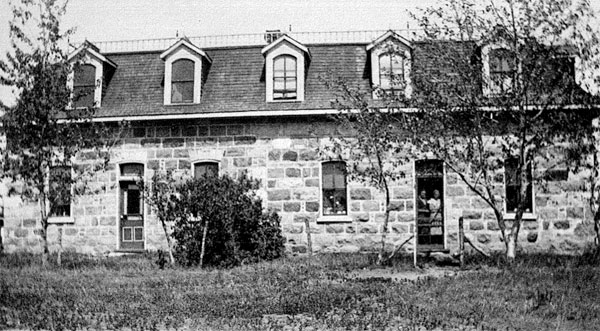 James Hossack House From the Local History Sources.. “Reflections” James A Hossack was born and educated in Killarney. He is the youngest son of Jack and Martha Hossack and grandson of Killarney pioneer, Samuel Hossack. Jim was athletically inclined and after being discharged from the Royal Canadian Navy in 1953, was playing hockey in Pilot Mound where he met and married his wife, the former Jane Blackburn, in July of 1954. Mr and Mrs Hossack resided in Winnipeg where Jim trained for and received his certificate in Sanitary In- spection. He has subsequently been employed as a Health Inspector in Winnipeg, Steinbach, and since 1965, in Killarney. James Hossack has been very active in community affairs in Killarney serving on the 1970 Centennial Committee, on the Westman Development Corporation, as a Trustee on the Turtle Mountain School Division, on the JAV David Museum Board, and on the Killarney Musical Festival Association and the Tri-Lake Concert Society. At present he is serving as Chairman of the 1982 Centennial Committee. Hossack, Samuel Biography: (1832-1913) m. Margaret Archibald (1832-1905), Claims: Came to Killarney from Wroxeter, Ontario, in 1881. July, 1881, he was the second person to take a homestead in that township and the first to take land on part of which the town of Killarney is now situated. Superintended the stone and brick work on the first Killarney High School, surveyed the area north of the bay into lots. Land for Demonstration farm purchased from Samuel. Probable Significance: Source: Trails to Killarney p 349 / Reflections p. 263 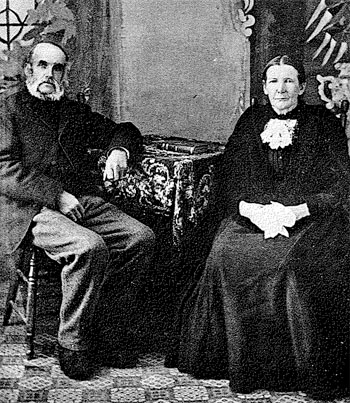 Samuel and Margaret Archibald Hossack From the Local History Sources.. “Trails” SAMUEL HOSSACK (1832-1913) came to Killarney from Wroxeter, Ontario, in 1881 with his daughter Mary and son John, aged fourteen. They travelled by train to Emerson and then by covered wagon. 'When they saw the lake "they thought they had found heaven." The fact that Indians were encamped on the beach did not disturb them; they pitched their tents on the south side of the bay. Having brought only the bare necessities, they depended upon the plentiful supply of fish and game for their daily fare. When Samuel Hossack filed for E 34-2-17 in July, 1881, he was the second person to take a homestead in that township and the first to take land on part of which the town of Killarney is now situated. His homestead took all the land south of Park Avenue to Highway 3 and east to Highway 18 and west to the bridge. He also filed for his sons, Alex and William, but they were not interested in farming and did not take up the homestead when they came. This land was later taken by John Williams and most of Killarney stands on it today. Samuel's wife, Margaret (1832-1905), and his sons, Alex and William, came in 1882 to the log house south of the bay. They were of Scottish descent and staunch Presbyterians. The Bible was read every day in their home. Samuel, Alex and Will were stonemasons and built many of the stone houses still to be seen in Killarney. In 1906, when he was over seventy, Samuel Hossack superintended the stone and brick work on the first Killarney High School. As their farm extended on both sides of the bay, threshers working on the north side used to cross the bay in a rowboat for their meals. As the population grew, Samuel Hossack surveyed the area north of the bay into lots and there he built the red brick house on Park Avenue in which the family lived for many years. When his daughter, Jessie, married J. G. Treleaven, they had a house built on four lots, and Alex, William and John also built homes there. Other lots were sold as the demand for town lots increased. The waste land east of the bay and the site of the old power plant were given to the town When the Provincial Government was operating experimental farms, it established one on land south of the bay bought from Samuel Hossack. When this policy was discontinued, the land became the property of the Agricultural Society and is used for Fair Grounds and sports. JOHN HOSSACK (1866-1940) filed for NE 2-4-17 when he was old enough to homestead. He lived in Killarney most of the time and there brought up his five children: Jessie (Mrs. Lorne Miller), Agnes (Mrs. R. W. Posnett), John, William and James. After World War II, "Bill" Hossack bought the strip north of the bay and built the Lakeside Motel there on land his grandfather had homesteaded in 1881. P259 The village of Killarney was once described as: comprising: part of Sec 34-2-17 known as the' 'Hossack Survey" Hysop, David 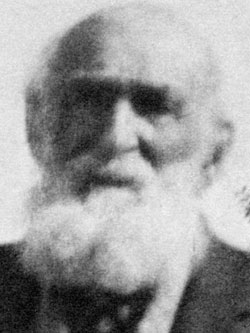 Biography: b. 1834 (Northern Ireland) (1834 - 1917) Claims: Pioneer farmer, railwayman, gardener. In August 1881, he helped with construction of the Canadian Pacific Railway in Manitoba and filed a homestead claim at the Deloraine Land Titles office for a homestead about four miles from Killarney Lake. William Whyte, superintendent of the C.P.R. in Winnipeg, called upon Hysop for special services and solicited his advice. Station gardens was one of his ideas. The railway put him in charge of the program, and he eventually became responsible for the maintenance of forty-four gardens on the main line from Brandon to Golden, BC. He managed the Macmillan Brothers grain warehouse, the first in Killarney. He and his wife were important figures in the life of the district. First trustee of Fairdale School. Early Justice of the Peace. Probable Significance: Source: Trails to Killarney p / Reflections p. From the Local History Sources.. “Reflections” Born at Langford, Northern Ireland in 1834, he immigrated to Canada with his family in 1847, arriving at Kingston, Ontario where he was apprenticed to a shoemaker. Three years later, he was helping with survey work for the Grand Trunk Railway, and served as conductor on its first passenger train into Toronto. In August 1881, he helped with construction of the Canadian Pacific Railway in Manitoba and filed a homestead claim at the Deloraine Land Titles office. He then returned to Ontario to bring his wife and five children (George Hysop, Frank Hysop, Ida Hysop, Harry Hysop, and Ernest Hysop) back to Manitoba, homesteading about four miles from Killarney Lake. He suggested to the CPR that they establish gardens at stations along their line, to show arriving settlers the capabilities of the land. The railway put him in charge of the program, and he eventually became responsible for the maintenance of forty-four gardens on the main line from Brandon to Golden, BC. He died at Killarney on 28 November 1917 From “Trails” DAVID HYSOP (1834-1917) came from Ireland, with his parents to Kingston, Ontario, in 1847. There his father apprenticed him to a shoemaker, but this was not the life for David. When he was sixteen he was on a Grand Trunk Railway survey party, and a few years later, conductor on the first Grand Trunk train that steamed into Toronto. A railway man like David Hysop would never have settled so far from a railway if he had not believed one would soon come into the district. Deputations went to Winnipeg urging the C.P.R. to continue its Rosenfeld-Manitou branch on to Turtle Mountain. It was David Hysop who went to Ottawa and secured a promise from Sir John A. Macdonald that the branch line would be extended into the area, he who sought out the surveyors and advised them what route to choose. Because of his railway experience and his knowledge of the country, William Whyte, superintendent of the C.P.R. in Winnipeg, called upon Hysop for special services. He made several suggestions which proved of value to the company. William Whyte commissioned him to investigate claims made by Alberta ranchers for loss of cattle due to fires started by sparks from the railway engines, and handed him a huge roll of bills with which to pay any claims he thought were just. In his report David Hysop advised ploughing wide fireguards along the track, which was done. A seed company urged the railway officials to plant this fireguard in grass but David Hysop said "Plough it and harrow it but keep it black. Planting good grass there would be establishing a free lunch counter for all the cattle in the district. Imagine the train wrecks and the lawsuits about cattle killed by the train!" Another suggestion was that to increase the sale of railway lands at selected stations gardens should be planted with flowers and vegetables to advertise the fertility of the soil to passengers. The vegetables and flowers could be used in the dining cars, he said, and the best shown at fairs far and wide. Water could be supplied where needed by the locomotives and kept in barrels near the track. William Whyte was enthusiastic about this and Hysop was appointed superintendent of forty-four gardens between Brandon and Golden on the main line. These C.P.R. gardens became world famous. He also advised caragana hedges in suitable locations which would serve as snow fences and be an example to settlers for shelterbelts on their farms. When Macmillan Brothers of Winnipeg built the first grain warehouse in Killarney, the firm of David Hysop and Son undertook to manage it. The son was Harry. Although his duties sometimes took him away from Killarney, he and his wife were important figures in the life of the district and could always take time to be good neighbours. In several of the stories written by other pioneers the statement occurs, "Mr. and Mrs. David Hysop were our first visitors," and in one "They brought us some eggs and some butter, and we were happy because that meant we could have a cake for Christmas." Kelloway, Sam 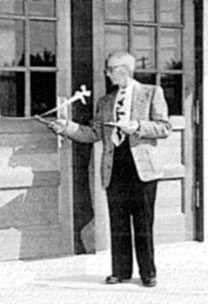 Biography: Claims: Their farm was planted with spruce and pine trees. Member of the Agricultural Society Probable Significance: Source: Trails to Killarney p / Reflections p. Kilpatrick, John Biography: Claims: Elder of the Erskine Presbyterian Church Probable Significance: Source: Trails to Killarney p / Reflections p. Lawrence. Mrs. B.T. (Mary Gertrude Cooney) Biography: 1886 (Killarney) Married Benjamin Thomas Lawrence in 1910. Claims: First child born in the village. Probable Significance: Source: Trails to Killarney p / Reflections p. Lawrence. Mrs. B.T. (Mary Gertrude Cooney) Biography: b. 1886 (Killarney) m. Benjamin Thomas Lawrence in 1910. Claims: First child born in the village. Probable Significance: Source: Source: Trails & Crossroads to Killarney p. / Reflections p. O'Brien, John Sydney 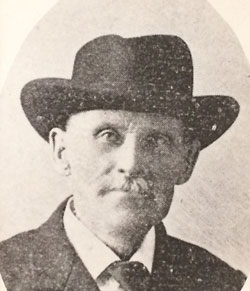 Biography: Claims: Land Guide. One of the first to build a shack. Responsible for re-naming naming Killarney Lake (formerly Oak Lake). Delivered Mail. Met Lady Aberdeen in 1890 and she referred to him as “The Godfather of the place.” Probable Significance: Source: Trails to Killarney p / Reflections p. Images: As Above Content: No additional information From the Local History Sources.. As Trails to Killarney sys, “One hundred years ago all that could be seen of what is now Killarney was the shack of John Sydney O'Brien, the dwelling of Samuel Hossack (the father of the Killarney settlement), and the hut of Arthur Rollins. “ Killarney Lake was named in 1880 by a government land agent who chose a homestead on the north shore of the lake then known as Hill, and later Oak Lake. Arriving in a Red River cart, he and another settler made camp for the night, built a smudge for their pony, consumed their tea and bannocks and adjourned to the lakeshore. The agent then declared that he was going to hold a political meeting. He moved that his friend take the chair, which was a big stone, and he would have the lake for his audience. He then commenced his speech: "My name is John Sydney O'Brien, a lineal descendant of Brian Boru, the last king of Munster. I have been sent to your country by our great chieftain, Sir John A. Macdonald. When I look at this beautiful lake it puts me in mind of the Lakes of Killarney in Ireland, and when I look at those hills, they remind me of the mountains of Killarney they call the Macgillicuddy Reeks. I think we should call this lake Killarney, after the beautiful hills of the homeland." Turning to his tent he found a bottle of the Irish and poured it into the lake, baptizing it "Killarney". "Oak Lake (Killarney, as the Land Guide, John Sydney O'Brien calls it)," Captain John Rigby wrote on July 23, 1882. Lady Aberdeen in “Through Canada with a Kodak in 1890” was more moderate in her enthusiasm. "Killarney is rather a respectable little place for only four years old," was her first comment. She took a picture of Lord Aberdeen with John Sydney O'Brien and his wife outside their cabin, and reported, "Our first visit was to the old Irishman, O'Brien, who constituted himself the godfather of the place, and insisted upon its being called Killarney. I am afraid my smothered exclamation of dismay at the first sight of the lake, remembering our first sight of the real Killarney, was taken as disrespectful by our cicerone (T. J. Lawlor); but, in truth, it is the prettiest thing we have seen in Manitoba." Rankin, John J. Biography: John Rankin (1856-1935) m. 1878 Janet Rankin (1860-1930) Claims: Arrived in 1881. Probable Significance: Source: Trails to Killarney p. 294 / Reflections p. From the Local History Sources..' JOHN M. RANKIN was born in Eaglesham, Scotland. After his mother died and his father married again, he became dissatisfied at home and threatened to run away to sea. His father promised that if he would wait a few years he would pay his way to Canada, so when the lad was seventeen he set out for Smith's Falls, Ontario, where an uncle lived. He found work in lumber camps and sawmills. In 1878 he married his cousin Janet Rankin (1860-1930) and three years later he and his cousin John J. Rankin and their families came to Manitoba. At Emerson they bought oxen and wagons and struck out along the Boundary Commission Trail, the families sleeping under the wagons at night. It took two weeks to reach the Long River district where John M. took the west half and John J. the east half of 22-2-18. John M. built a one-room sod shanty for a temporary shelter, no glass in the window, a rag carpet taking the place of a door. When it rained, the roof dripped long after the rain had ceased and the only dry place was under the bed. Rankin, Alex Biography: Alex Rankin (1859-1936), m. 1886 Elizabeth Coventry (1864-1946). Claims: Arrived in 1881.from Scotland. Active in making representations to the government for farmers rights vs. the CPR. He wrote ”Reminiscences of an Early Home-steader” included in “Stories of Pioneer Days at Killarney.” It is a valuable first-hand record of the times. Probable Significance: Source: Trails to Killarney p. 294 / Reflections p. Images: As Above Content: No additional information From the Local History Sources.. Alex Rankin in Stories of Pioneer Days at Killarney stated that the first church service in Wakopa was conducted by a young Presbyterian student, William Patterson, later Dr. Patterson of Toronto. ALEX M. RANKIN (1859-1936), a younger brother of John M., came from Scotland in 1881 and homesteaded W 20-2-18. For two seasons he lived in a dug-out sixteen feet square heated by a small sheet-iron stove. In winter several men with teams drove over the top of it, not knowing that a faithful homesteader was fulfilling his residence requirements underneath. He kept a diary from which he culled material for his contribution to Stories of Early Days At Killarney. In 1886 he went back to Scotland and returned with a Scotch bride, Elizabeth Coventry. They had eight children. Later he moved to the Lyonshall district where he continued to farm until he retired to Killarney. There was dissatisfaction among the farmers of the West about the charges made by the elevators and about the grading of the wheat at the local elevators. Alex Rankin was one of those who persisted in making representations to the government until in the early 1900's the farmers were granted the right to load directly into grain cars, thus saving from l0 to 20 cents a bushel. He kept a book and notified each farmer when his turn came for a car. Richards, Charles Biography: (1844 – 1930) m. Harriet Mee ( 1844 – 1928) Claims: Homestead in 1881. The first church service in that district was held in their home by the Rev. Andrew Stewart. Son, Ernest, was the first white boy born in the Oak Ridge district, About 1902 Charles Richards bought a general store in Killarney and set Ernest up in business. He operated the store until he went to live in Vancouver, British Columbia, in 1929. Probable Significance: Medium Source: Trails & Crossroads to Killarney p. 297 / Reflections p. Rigby, Captain John  Biography: John Rigby (1844-1909 m. Agnes Fairbairn (1847-1896) Claims: Arrived in 1882. Captain Rigby had been a sailor and had seen many parts of the world.When a Masonic Lodge was formed in Killarney, Captain John Rigby became the first Worshipful Master. Called the meeting to organize Oak Ridge School. He built the school, the neighbours helping by drawing lumber from Brandon and from Wakopa. Probable Significance: Source: Trails to Killarney p298 / Reflections p. From the Local History Sources.. CAPTAIN JOHN RIGBY ran away from his home in Bury, England, when he was fourteen and sailed the seven seas. He came to Hawkesbury, Ontario, where he married Agnes Fairbairn and served as captain on the St. Lawrence River steamboats, The Princess and Dagmar. In 1882, in company with John Westley, Edmund Lillew, and Ralph Vipond, he joined the westward land rush. When a Masonic Lodge was formed in Killarney, Captain John Rigby became the first Worshipful Master. Captain John Rigby called the meeting to organize Oak Ridge School, which was set up by the Municipal Council by Bylaw 9, March 14, 1885, under the name Killarney. It was called Killarney, and the school in the town called Oak Lake until 1892. Captain Rigby built the school, the neighbours helping by drawing lumber from Brandon and from Wakopa. "Oak Lake (Killarney, as the Land Guide, John Sydney O'Brien calls it)," Captain John Rigby wrote on July 23, 1882, to his sister in England, "is a beautiful sheet of water, clear as crystal and abounding with fish and fowl ... I think we would travel the world over before we would hit another spot to equal Manitoba and this locality in particular." Captain Rigby had been a sailor and had seen many parts of the world. His letter was effective; his sister joined him in Killarney. Rollins, Arthur Biography: Claims: Came from Ontario, to Crystal City in 1879 with Thomas Greenway's first party of settlers to Cyrstal City. June 1882, he had established a small store on the south side of the bay. Moved to South Railway Street when the railway arrived. First School Trustee. Probable Significance: Source: Trails to Killarney p93 / Reflections p. From the Local History Sources.. ARTHUR and ROBERT ROLLINS came from near Exeter in Huron County, Ontario, to Crystal City in 1879 with Thomas Greenway's first party of settlers. In Sept. 1881, the first issue of the Rock Lake Herald states that Arthur Rollins offered to sell a half section south of the town for $4000.00. What he received for it we do not know, but by June 1882, he had established a small store on 35-2-17 when W. J. Schnarr and his companions passed that way. Legend has it that at the first political meeting at Wakopa, when: asked what were the boundaries of the constituency, Arthur Rollins, replied "They begin at Clearwater on the east and end at sun down on the west." When the railway came to Killarney, Arthur Rollins promptly moved his store from the site east of the Bay to South Railway Street. Rollins, Frank Biography: Claims: Brother to Arthur & Frank. Arrived with them. Once proprietor of the Grand Central Hotel. Robert built the first General Store in Crystal City and then opened stores in Baldur and Killarney, establishing the first chain stores in the West. Probable Significance: Source: Trails to Killarney p93 / Reflections p. Claims: Brother to Arthur, arrived with him. Sanders, William John (Jack) Biography: (1871 – 1956) Claims: He was one of the team of four which won the International trap shooting competition in 1906. Brought Hungarian partridges and ring-neck pheasants into the district. He belonged to the Masonic Order and at one time was District Deputy Grand Master. In 1912 and 1913 he was mayor of Killarney. Probable Significance: Medium Source: Source: Trails & Crossroads to Killarney p. 304 / Reflections p. Sanders, John Biography: M. Ann Howard Claims: Came from Exeter, Ontario, in 1881. Stone mason. John Sanders was elected to the Council of Turtle Mountain in 1885. Sanders School was organized on May 16, 1885, at a meeting at his home. Involved in horse racing. Probable Significance: Medium Source: Source: Trails & Crossroads to Killarney p. 303 / Reflections p. From the Local History Sources.. JOHN SANDERS, a stone mason by trade, came from Exeter, Ontario, in 1881 and filed for W 20-2-17 in 1882. With another newcomer, John Christie, he went to Turtle Mountain, and built a shack. John Sanders was elected to the Council of Turtle Mountain in 1885. John and Ann Sanders brought up six daughters and two sons. WILLIAM JOHN (JACK) SANDERS (1871-1956) took over the farm and later handed it on to his son, Roy, who farmed there until 1964. Jack Sanders was a noted shot, winning so many trophies that it took a room to hold them. He was one of the team of four, with O.G. Rutledge, Dr. Musgrove, and Norman Arscott, which won the International trap shooting competition in 1906. His brother Sam was also a noted shot. He was one of those who spent time and money bringing Hungarian partridges and ring-neck pheasants into the district. He set high standards for the sport of shooting. Anyone who accompanied him had to fill in his own goose-pits, shut his share of the gates, and refrain from pot-shooting or he would not be with that group again. Sanders School was organized on May 16, 1885, at a meeting at the home of John Sanders. Jack Sanders was outstanding; he won so many trophies and prizes that it took a whole room to house them. Scott, George Biography: Claims: Came to Wakopa in 1880. Helped in an effort to mine coal. A shaft was sunk on 5-2-19 and a good quality of coal discovered, but at a depth that made working it unprofitable. Son James was the first white boy registered as born in Wakopa. Probable Significance: Medium Source: Trails & Crossroads to Killarney p. 306 / Reflections p. Scott, Philip Biography: Claims: Came west to Wakopa with Finlay Young in 1879. He worked on the survey party during the winter, and the next summer for the C.P.R. In 1882, they settled down on the homestead. He was the first superintendent of the Wakopa Sunday School. Probable Significance: Medium Source: Trails & Crossroads to Killarney p. 325 / Reflections p. Shier, Robert Biography: Claims: Probable Significance: Source: Trails to Killarney p / Reflections p. Schnarr, William J. Biography: (1864-1941) Claims: Businessman. Often walked three and a half miles to Killarney several times a week where there was a debating club, a dramatic club, and where William played in the band. He kept a diary which gives an enlightening picture of a bachelor's life on the homestead. In 1887 he was elected to the Council of the Municipality of Turtle Mountain, an office he held for eleven years. Appointed Customs Officer in 1904. Moved to Killarney. He served several years on the School Board and at one time held the office of secretary or treasurer in seven local organizations Agent for the United Grain Growers. He held high offices in the Masonic Lodge and also in the Odd Fellows. Made an honorary life member of the Killarney Curling Club. Charter member of the Golf Club. Probable Significance: Source: Trails to Killarney p 188 / Reflections p. 305 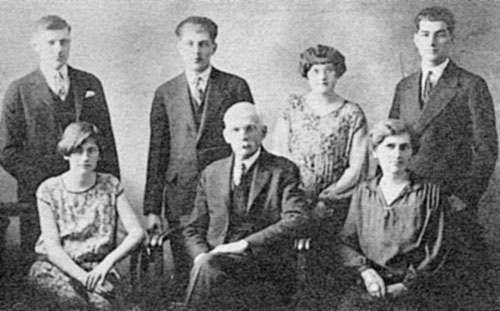 Standing: Wilfrid, Raymond, Margaret and Herman. Seated: Kathleen, W.J. Schnarr, Mrs. Schnarr From the Local History Sources.. “Reflections” Born at Goderich, Huron County, Ontario on 3 March 1860, son of architect James Smaill, he was educated at the Goderich Public School and Collegiate Institute. He came to Manitoba in 1880, working in the real estate business in Emerson in the days of its boom then moved to Crystal City in 1881 where he opened an office and had charge of the business of the late Hon. Thomas Greenway. He moved to Killarney in 1884 where he homesteaded and opened a real estate business. He and wife Ruth Ella Burns of Bowmanville had one son and two daughters. He was active in municipal affairs, serving as Reeve of the Rural Municipality of Turtle Mountain and Mayor of Killarney (1910, 1928-1937). He served for 13 years as County Court Clerk, was a member of the Killarney School Board for nine years, and President of the Killarney Curling Club for fourteen years. A notary public and a Police Magistrate, he was President of the Killarney Board of Trade for several terms. During the First World War, he was a member of the Tribunal Board and Chairman of the Red Cross and Patriotic League. He was Secretary of the Jamestown-Brandon Highway and Governor of the Highway for Canada. He was an Anglican and supported the Liberal party in politics. He died at Killarney on 6 September 1937 SCHNARR
WILLIAM
J. SCHNARR
(1864-1941) was born in Tavistock,
Ontario, the son of Werner Schnarr who came from Germany in 1854 and Catherine Zinkman, also of German origin. In their home they spoke both English and German. He kept a diary which gives an enlightening picture of a bachelor's life on the homestead. The six men lived together and worked together until their houses were built. William Schnarr became secretary, a position he held for twenty-two years. The teacher usually stayed at the Finkbeiner home and when Jesse Poole was there, he and William thought nothing of walking three and a half miles to Killarney several times a week where there was a debating club, a dramatic club, and where William played in the band. In 1887 he was elected to the Council of the Municipality of Turtle Mountain, an office he held for eleven years. Appointed Customs Officer in 1904, William Schnarr moved to Killarney where, two years later, he bought the stone house on Clark Avenue where he and his wife spent the rest of their days. He served several years on the School Board and at one time held the office of secretary or treasurer in seven local organizations When the government changed in 1911, he lost his job as Customs Officer, for he was an ardent Liberal and active in the Party; naturally the Conservatives, according to the custom of that time, replaced him. The next year he was offered the position of agent for the United Grain Growers. He held high offices in the Masonic Lodge and also in the Odd Fellows. In recognition of his interest in curling he was made an honorary life member of the Killarney Curling Club. When a golf course was proposed in 1921, he was one of the charter members who put up $10.00 to start the club. Tayler, Augustus Biography: (1857 – 1927) m. 1884) Sarah Blackwell) Claims: Augustus was a sailor who had circled the globe in a sailing vessel, arrived in Manitoba in 1878, and to the Faidale District in 1881. An Indian trail leading from Rock Lake, Lorne and Louise Lakes to Turtle Mountain crossed Long River near his dugout and he often traded produce for fish with the Indians. Probable Significance: Medium Source: Trails & Crossroads to Killarney p. 35 / Reflections p. Highlights from Local Histories AUGUSTUS TAYLER (1857-1927), a sailor who had circled the globe in a sailing vessel, arrived in Manitoba in 1878 and took up a homestead near Morris on the Red River. He brought an invalid brother with him, who died in hospital in Winnipeg. Augustus had completed his homestead duties, breaking land and putting up buildings, when a stranger appeared and claimed the property. He had filed in the Land Titles Office two weeks prior to Augustus and took possession. With a friend, George Reynolds, Augustus Tayler set out in April, 1881, to make a new start in the Fairdale district, where he took W 22-2-16 and Reynolds took the east half. He had spent his savings caring for his brother and improving the land at Morris, so he started here without funds. He borrowed Reynolds' shovel in the evenings and by working all night dug a garden patch and a hole in a sandy hill for a one-room dwelling. Over this hole he placed a pole, set willow branches from the ground up to the pole, covered the willows with rough hay, sad, and earth, making a room with earth for floor, walls, and ceiling. He often told about receiving a letter from his brother in England, a bank manager, who warned him to be careful where he kept his funds, as several banks in England had failed. His reply was that he lived in a bank (of a hill). He had to borrow money for the postage from George Reynolds. An Indian trail leading from Rock Lake, Lome and Louise Lakes to Turtle Mountain crossed Long River near his dugout and he often traded produce for fish with the Indians. After two years in the dugout, he built a log house which stood until it was taken down in 1949 by his son Edward, although it had been replaced as the home of the family in 1904 by a large brick house. In 1884 he married Sarah Blackwell (1863-1938) whose family had come from Lucan, Ontario, to the Holmfield district in 1880. They had three sons and seven daughters. Their son, Edward, and his son farmed this property until 1964. Another son William farmed on NE 14-2-16. Williams, John Biography: Londonderry, Ireland (1828-1907) m. 1850 Cynthia McLean (d 1877) m. 1879 Mary Clark (1859-1939) Claims: Pharmacist, farmer. Qualified druggist, with his own store in London, Ontario, from 1849 until he came west in 1882. When the railway came, most of the townsite was on his property. Insisted that Broadway, which became the Main Street of the town, should run at right angles to the railway, not facing it as it does in so many prairie towns. He gave the town the site for the school. He gave the Methodist Church its site, and sold a lot for $50 for the parsonage, and sold the town six lots for a cemetery for $200 in 1895. Started the cottage development on the lake. Started a drug store, then concentrated on real estate. Early Justice of the Peace. Built the first boat on the Lake in 1883. Probable Significance: Source: Trails to Killarney p322 / Reflections p. From the Local History Sources.. “Reflections” Born at Londonderry, Ireland on 15 December 1828, son of Joseph Williams and Dorothea Green, he was educated at Foyle College (Londonderry) then emigrated to Canada at the age of 16, setting at Nicoll, Ontario for a short time. He then spent 18 months in the United States after which he returned to Canada and worked as a clerk in drug stores at Brockville and Hamilton, Ontario. In 1849 he moved to London and established a drug store there which he conducted until 1877 when he came to Manitoba and settled where the town of Killarney now stands. He farmed for a few years and, in 1891, ran a drug store for two years. He sold the business and devoted himself to real estate and personal interests. In 1850 he married Cynthia C. McLean (?-?) of Brockville, Ontario. They had four children: Joseph Williams, John Williams, Charles E. Williams, and Ella Williams. He married again in 1879 to Mary Clark (?-?) of Teeswater, Ontario. They had five children: Frank Williams, Arthur Williams, Elizabeth Dorothy Williams, Lenore Williams, Walter Williams, and Ruth Williams. He was a member of AF & AM (St. John's Lodge of London No. 20). He died at Killarney on 6 April 1907. JOHN WILLIAMS (1828-1907) came to America from Londonderry, Ireland, when he was sixteen years old. He became a qualified druggist, with his own store in London, Ontario, from 1849 until he came west. In 1850 he married Cynthia McLean of Brockville who died in 1877 leaving three sons and a daughter. In 1879 he married Mary Clark (1859-1939) of Teeswater. With his son, John, he came to Manitoba in 1882, took a look at Winnipeg, declared he "would never live in that mudhole" and went on to Killarney where he took up W 2-3-17. When the railway came, most of the townsite was on his property and he was fully occupied looking after sales and collections. It was he who insisted that Broadway, which became the Main Street of the town, should run at right angles to the railway, not facing it as it does in so many prairie towns. He gave the town the site for the school, gave the Methodist Church its site, and sold a lot for $50 for the parsonage, and sold the town six lots for a cemetery for $200 in 1895. In April 1895 The Killarney Guide announced that John Williams had built six cottages for rent on the north shore, and a year later reported that he had added more cottages, provided Peter- borough rowboats for his tenants, was asking the railway for reduced fares for summer visitors, and that in July there were about fifty cottagers at the lake. |